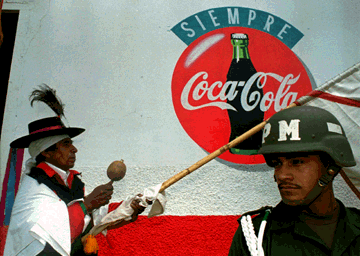Mar
2
Folk Culture And Modernity
Posted by: Brian | March 2, 2009 | Comments Off on Folk Culture And Modernity
I found the first article an interesting read for about the first 40 pages or so, then I began to fade away. In his essay, Mexican Murals in times of crisis, Bruce Campbell gives a well rounded synopsis of both the creation and demise of Mexican Muralism. As he states, “Mural painting was a pre-Columbian practice (Pg. 13), with its roots in the Aztec and Mayan empires. Over the years Mexican Muralism grew to be an artistic method for telling a story or more importantly, displaying political defiance. After the Mexican Revolution ended in 1920, highlighted by the “tres Grande” (Diego Rivera, Alfaro Siqueiros, and Jose Clemente Orozco), Mexican Muralism became increasingly Political in an attempt to represent the working class or Campesinos. Throughout the article, Campbell discusses how over the next 60 years or so, Mexican Muralism has gone from a thriving powerful art form to being all but wiped out by the government. Campbell talks about the idea of public space and how it was contested for by activist Muralist and the government. For a number of years Murals were the primary platform for the working class to display their feelings about society and the government and they were heralded as masterful pieces of art, more than just graffiti. But almost all of the Murals have either been destroyed or painted over for advertising or political campaigns etc. Campbell describes these Murals as being a way for the people to convey Folk culture through Art within the public sphere. Overall it was an interesting read that gives a great deal of background info on Mexico and a great deal about the political evolution of the country over the past 100 years or so.
